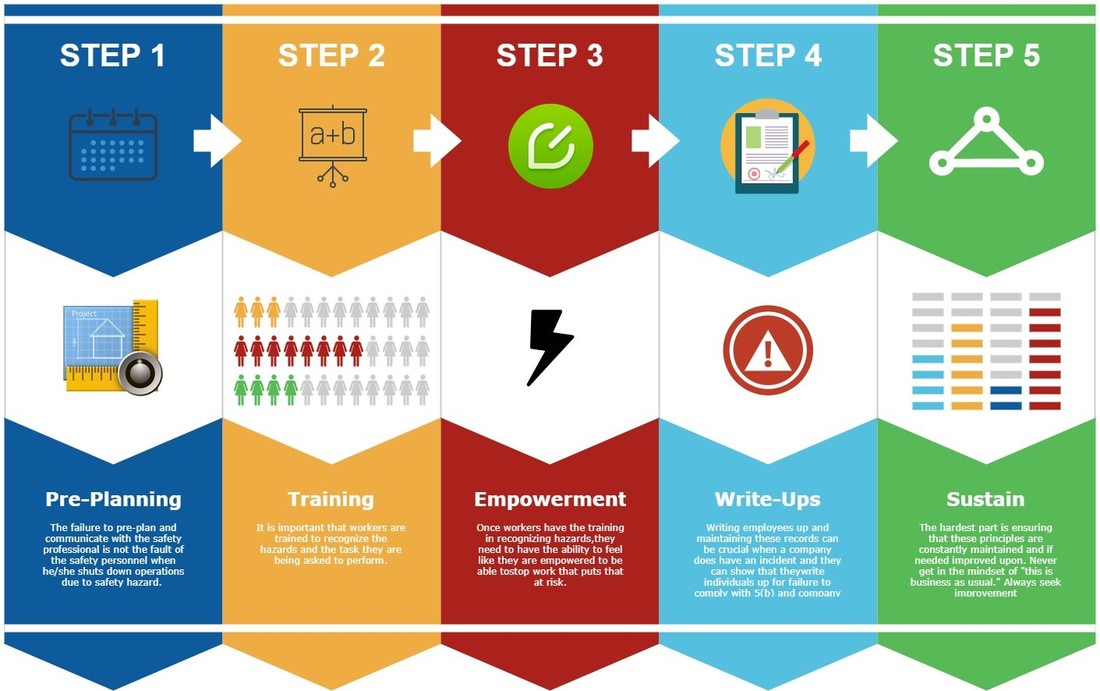|
I’m sure that you are aware of the OSHA Act of 1970: General Duty Clause 5(a)where it states the employer requirement, but are you aware of Section 5(b)?
(a) Each employer - (1) shall furnish to each of his employees employment and a place of employment which are free from recognized hazards that are causing or are likely to cause death or serious physical harm to his employees; (2) shall comply with occupational safety and health standards promulgated under this Act. (b) Each employee shall comply with occupational safety and health standards and all rules, regulations, and orders issued pursuant to this Act which are applicable to his own actions and conduct. What is sometimes lost in the world of safety is section 5(b) of the general duty clause and we only focus on 5(a). Partially the reason is that OSHA is going to cite the company, not the employee for working in an environment where a hazard occurs. But, if the employee knowingly put himself or herself at risk and violates company and OSHA policies, the company might not be cited. For instance, a recent case in Florida saw the judge vacate a general duty cause citation after an employee was struck by a reversing bulldozer. The reasoning—the Department of Labor representatives failed to establish that any of the workers were exposed to the struck by hazard, according to the Judge. Meaning, the employee knowingly put himself at risk against company polices. Cases like this show that 5(b) was intended to protect the company in cases where employees knowingly put themselves at risk, failure to follow their company training on hazards, and OSHA standards. So, what does this mean? Employers need to ensure they are giving the proper tools to their employees to spot these hazards. These tools include: 1)Pre-Planning, Pre-Planning, & more Pre-Planning: The failure to pre-plan and communicate with the safety professional is not the fault of the safety personnel when he/she shuts down operations due to safety hazard. 2)Training: It is important that workers are trained to recognize the hazards and the task they are being asked to perform. 3)Empowerment: Once workers have the training in recognizing hazards, they need to have the ability to feel like they are empowered to be able to stop work that puts that at risk. 4)Write-Ups: The dreaded write-ups, the hardest thing to do. It is important that safety professionals write-up employees that choose to take risk, without being asked, and create a hazardous work environment. Writing employees up and maintaining these records can be crucial when a company does have an incident and they can show that they write individuals up for failure to comply with 5(b) and company policies. 5)Sustain: The hardest part is ensuring that these principles are constantly maintained and if needed improved upon. Never get in the mindset of this is business as usual. The training tracking piece with then STAC system has the capability to allow for these tools to be put into action. A major piece in pre-planning is quickly knowing which employees are trained for what task and what further training that employees might need. Additionally, when each employee receives their own STAC card it is a representation of how serious the company takes safety and empowers them to know what training they have and when it expires. Thoughts: So, what are your thoughts on 5(b)? Have you ever heard of it? What is the current policy that you use to ensure employees are compliant with this law?
0 Comments
Your comment will be posted after it is approved.
Leave a Reply. |
AuthorSTAC Admin Categories
All
Archives
July 2024
|


 RSS Feed
RSS Feed